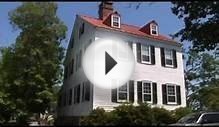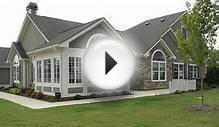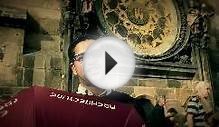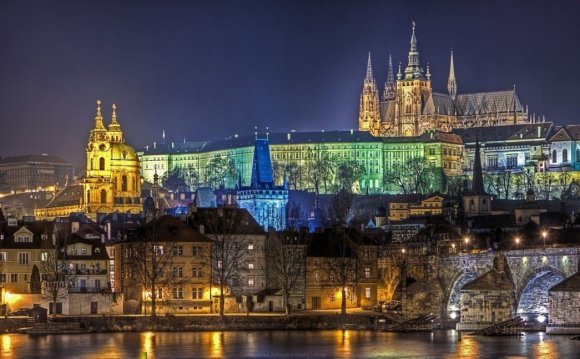
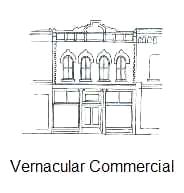 Historical Architectural Styles and Building Types
Historical Architectural Styles and Building Types
A brief description of common architectural building styles
1835-1895 Vernacular Revival
Vernacular is the term given to indigenous forms of building construction. Some refer to vernacular buildings built after mill-sawn lumber was available as National Style. Buildings continued to be built according to the earlier traditional folk forms, but with widely available lumber some new shape innovations occurred. Some may have details taken from high styles such as Greek Revival or Colonial Revival. Others may have later high style modifications.
- Front Gable (2 stories high, end gable)
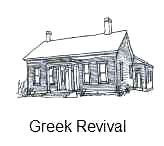 Gable-and Wing or Upright-and-Wing
Gable-and Wing or Upright-and-Wing
(2 stories, end gable with a 1, 1-1/2, or 2 story wing at the side)- I-House (2 stories, 2 rooms wide and one room deep)
- Four-over-Four (2 stories, 2 rooms wide and 2 rooms deep)
- Shot-Gun (1 story, 1 room wide and 2 or more rooms deep)
- Workers Cottage (1 or 1-1/2 stories, 2 rooms side by side)
- One-Pen (1 story, 1 room) § Side Gable also called Massed Plan (2 rooms wide and 2 rooms deep)
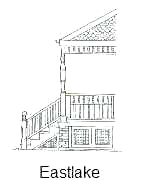 Pyramidal (1 or 1-1/2 stories with pyramidal roof) Commercial Vernacular 1835-1925
Pyramidal (1 or 1-1/2 stories with pyramidal roof) Commercial Vernacular 1835-1925
Early vernacular commercial buildings are referred to as Commercial Vernacular style, and the latter forms are referred to as 20th Century Commercial Style. These buildings are recognized by their form, not their architectural style although they may have some decorative features and detailing taken from architectural styles and may even have some high style features. Italianate and Classical features are often incorporated. Main streets were developed in response to the community's need for a concentrated focus of public buildings. These commercial buildings are typically found in main street areas.
- street facades abutting one another and defining the property's Edge
- buildings in relative scale with adjacent commercial vernacular buildings
- facades that adhere to the basic composition with variations depending on use and time period
- typical three part facades: storefront, upper stories, and cornice or parapet
- features may include: prism glass in the transoms above storefronts, cast iron supports and pressed metal cornices.
RELATED VIDEO
